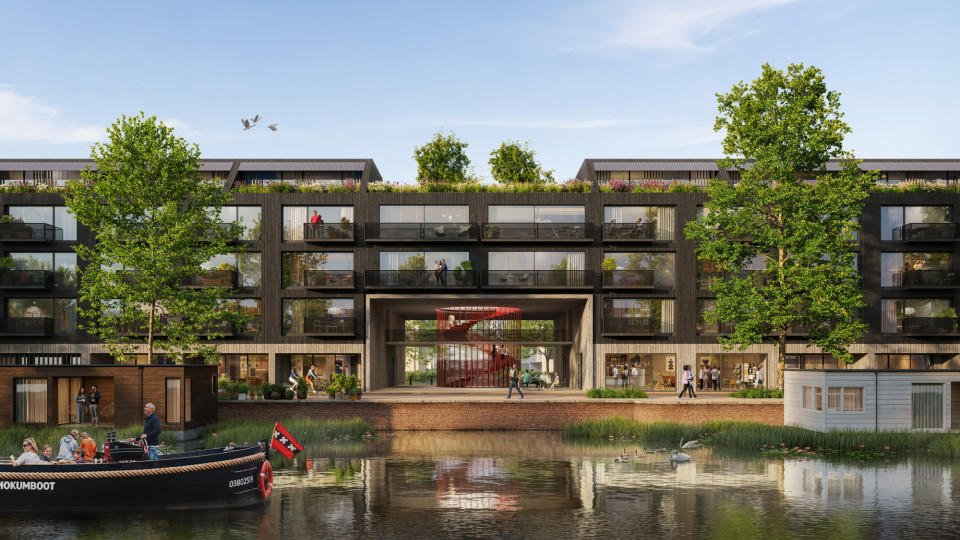Designing for the elderly demands special attention to matters of security and social interaction, and to the comfort and adaptability of their accommodation. These considerations are all embodied in our design for the Grashof complex. Situated in Rotterdam’s Ommoord district, Grashof consists of forty-four sheltered housing units and was commissioned by the Woonbron and Kristal housing associations.
Designed to meet future needs
We conceived our design on the basis of the expressed wishes of the building’s end users, which included safe and well-planned walkways, sufficient distance between external walkways and bedroom windows, and a bit of private space around the front doors. In addition, we made the apartments easy to adapt according their occupants’ changing needs, which might include anything from a spare bedroom to a recreation room. Bedrooms and bathrooms are also easily modifiable in the event of a resident becoming disabled or bedridden. These considerations allow residents to remain independent in their apartments until well into old age.
Greenery in the service of security
Grashof is surrounded by greenery, which makes it more visually and experientially pleasing for both residents and neighbours. On the southern side is a large garden with tall, mature trees, providing essential public space for the whole neighbourhood. We deliberately designed the building to be compact in form, thereby allowing even more parking space than mandated by urban planning requirements. Greenery constitutes an important part of the building itself and serves an important role with regard to outdoor parking, as exemplified by the climbing plants on the facade, the strip of vegetation abutting the facade and the trees and hedges that enclose the car park. Finally, our design maximises visibility both from the complex and towards it, which is essential for security.
Sustainable in every sense of the word
Besides lifelong usability, we also paid special attention to the building’s energy consumption, which we minimised by designing the complex to benefit from weather conditions. One of the ways we did this was by having south-facing living rooms with large windows to let in as much daylight as possible, but shaded by overhangs, thereby allowing residents to take maximum advantage of the sun’s warmth in wintertime while keeping out the glare in summer. In contrast, we kept the walls on the northern side of the building, where the bedrooms are situated, as blank as possible, and filled them with extra insulation to minimise heat loss. Any additional heating requirements are served by an underground thermal energy storage system. The sum of considerations like these allowed Grashof to achieve a GPR score of 7.8, based on an independent assessment of its qualities regarding energy efficiency, environmental performance, health-supporting properties, usability, security, and experiential and future value.
Project details
Gegevens
| Location | Brongras 61-147, Rotterdam |
| Total floor area | 5.370 m² |
| Project and car park | 44 sheltered housing apartments, entrance hall, bicycle shed |
| Start design | February 2009 |
| Start construction | April 2012 |
| Project completion | April 2013 |
Ontwerpteam
| Client | Woonbron Housing Association |
| End users | Old age pensioners |
| Project architect | Paul de Ruiter |
| Project team | Caro van Dijk, Richard Buijs, Niels Groeneveld, Marieke Sijm |
| Construction consultants | Leenbrak |
| Building services engineering | Nelissen Engineering |
| Urban planning | dS+V Rotterdam |
| Contractor | Stebru Bouw |
| Photography | Pieter Kers |









